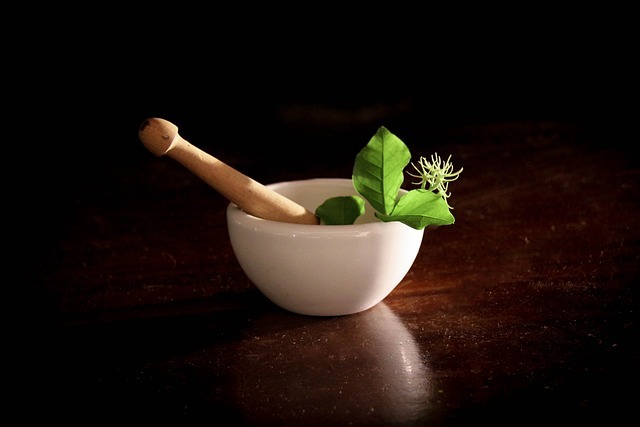In the hustle and bustle of modern life, the allure of turning to nature for remedies is stronger than ever. The concept of making herbal remedies and medicines from wild plants has gained significant popularity, drawing attention not only for its natural appeal but also for its potential health benefits. Let’s embark on a journey through the lush landscapes of herbal knowledge, exploring the art of crafting remedies straight from the heart of the wilderness.
Table of Contents
ToggleUnveiling the Secrets of Wild Plants
Wild Plants as Healing Agents
In the realm of herbal medicine, wild plants are nature’s pharmacy, brimming with medicinal properties waiting to be unlocked. From the soothing properties of chamomile to the immune-boosting echinacea, the variety of healing potential found in wild flora is astounding. Nature, in its vast expanse, hides a treasure trove of healing agents within wild plants. These botanical wonders, often overlooked, carry potent medicinal properties. Let’s delve into the fascinating world of wild plants as nature’s medicinal marvels.
1. Chamomile (Matricaria chamomilla)
Chamomile, with its dainty white flowers and apple-like fragrance, is a powerhouse of calming properties. Known for its soothing effects, it aids in digestion, promotes relaxation, and even assists in easing mild insomnia.
2. Echinacea (Echinacea purpurea)
A vibrant purple coneflower, Echinacea is a renowned immune system booster. Rich in antioxidants, it helps fend off infections and reduces the severity and duration of colds, making it a go-to herbal remedy during the sniffle season.
3. St. John’s Wort (Hypericum perforatum)
Named after its blooming around St. John’s Day, this yellow-flowered herb is famous for its mood-enhancing properties. St. John’s Wort is a natural antidepressant, often used to alleviate symptoms of mild to moderate depression.
4. Yarrow (Achillea millefolium)
Yarrow, with its feathery leaves and clustered white flowers, boasts a myriad of healing benefits. Known for its ability to staunch bleeding, it also aids in digestion and possesses anti-inflammatory properties.
5. Lavender (Lavandula angustifolia)
Beyond its enchanting aroma, lavender is a versatile healing plant. It’s celebrated for its calming effects, assisting with anxiety, stress, and sleep disturbances. Lavender oil is a staple in aromatherapy and topical applications.
6. Peppermint (Mentha x piperita)
With its invigorating scent and refreshing taste, peppermint is more than a culinary delight. It aids digestion, relieves headaches, and serves as a natural decongestant, making it a versatile remedy for various ailments.
7. Calendula (Calendula officinalis)
Known as the marigold, calendula is a vibrant orange flower with potent anti-inflammatory and antifungal properties. It’s commonly used in skincare products, promoting wound healing and soothing skin irritations.
8. Turmeric (Curcuma longa)
While not a wild plant in all regions, turmeric’s potent healing compound, curcumin, deserves mention. This golden spice is anti-inflammatory, supports joint health, and shows promise in preventing and treating various chronic conditions.
9. Aloe Vera (Aloe barbadensis miller)
A succulent with a gel-filled interior, aloe vera is a skin-soothing marvel. It accelerates wound healing, alleviates burns, and possesses antimicrobial properties, making it a must-have in natural first aid.
10. Ginger (Zingiber officinale)
Rooted in culinary traditions and herbal medicine, ginger is a spicy marvel with anti-nausea, anti-inflammatory, and antioxidant properties. It’s a go-to remedy for digestive issues, motion sickness, and respiratory ailments.
Exploring the healing potential of these wild plants not only connects us with nature’s pharmacy but also empowers us to embrace holistic well-being. Incorporating these botanical allies into our lives opens the door to a healthier, more balanced existence.
Harvesting Wisdom from the Wilderness
Before delving into the process of creating herbal remedies, it’s crucial to understand the importance of responsible harvesting. Sustainable practices, such as wildcrafting, ensure the preservation of plant populations while allowing us to tap into nature’s medicine cabinet.
The Art of Crafting Herbal Remedies
Embarking on the journey of creating herbal remedies begins with identifying the right plants. Equip yourself with the knowledge to distinguish the healing gems from the rest of the flora. Common wild medicinal plants like St. John’s Wort and Yarrow hold secrets waiting to be uncovered.
Harnessing the Power of Infusions and Decoctions
Once you’ve gathered your wild ingredients, it’s time to brew healing elixirs. Explore the nuances between infusions and decoctions, and delve into herbal tea recipes that cater to various health concerns, from relaxation to immune support.
Navigating the World of Herbal Medicine
Herbal remedies extend beyond mere physical relief; they offer holistic healing for the mind and body. Dive into the diverse array of benefits, from stress reduction to promoting overall well-being.
Integrating Herbal Medicine into Everyday Life
Making herbal remedies isn’t confined to a specific time or place; it’s about seamlessly integrating them into your daily routines. Explore creative ways to incorporate herbs into meals and skincare routines, adding a touch of nature to your lifestyle.
Challenges and Cautionary Notes
While the world of herbal medicine is enchanting, it’s essential to be aware of potential risks. Some wild plants can be toxic, and allergic reactions may occur. Navigate the terrain cautiously, seeking guidance when needed.
The Future of Herbal Healing
As interest in herbal remedies grows, so does the potential for integrating traditional practices into modern healthcare. Explore the evolving landscape where ancient wisdom meets contemporary wellness.
Empowering Individuals to Take Charge of Their Health
In a world saturated with pharmaceuticals, the shift towards herbal empowerment represents a desire for self-care. Discover how individuals are taking charge of their health by embracing the richness of herbal remedies.
Conclusion
The journey of making herbal remedies and medicines from wild plants is a profound exploration of nature’s bounty. It’s a green path to wellness, intertwining ancient wisdom with modern aspirations for a healthier, more balanced life. As you embark on this journey, remember to tread with respect, curiosity, and a deep appreciation for the healing wonders that the wild plants generously offer. Cheers to your holistic well-being!







